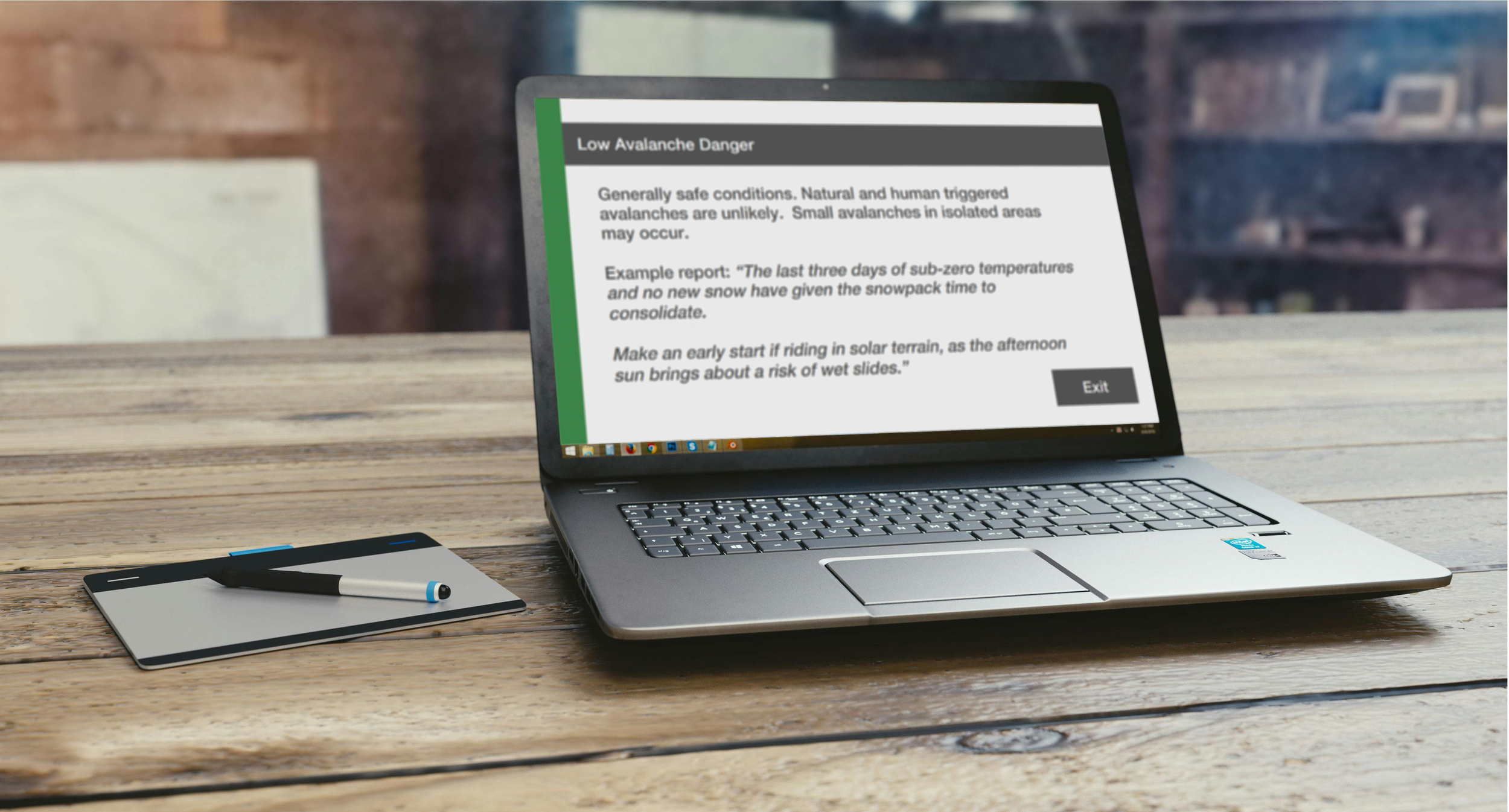
The Project
Mountain Safety Collective is a not-for-profit organisation that monitors avalanche and snowpack conditions in the Australian alpine region.
Before I came in, most of their work had been focused on forecasting, with little emphasis on education. Together, we recognised that people who ski out in mountain environments need more than just a forecast. They also need to be trained on how to read it and understand dangers unique to the Australian backcountry.
After a discovery phase, we decided to build an interactive and scenario-based e-Learning module to help users better understand forecasting and apply it to real-life situations.
My Role
I was responsible for the entire project - from discovery, all the way to implementation and evaluation.
mapping it all out
The Process
I believe that to get a project right, you need to get it right from the start.
Our analysis phase involved understanding the context behind this project, conducting a needs assessment and building learner personas in Miro. This gave me a clear direction to follow, ensuring that the subsequent phases, such as development and implementation were aligned with the needs of the learners. It also gave the client a peek into how I work and allowed me to answer their questions and concerns before we started.
After this, I started to build sketches of the storyboard in Miro. I really enjoy using Miro for iterative design because it allows me to think visually and collaborate with the client in real-time.
Here, it became clear that there were two parts to the storyboard. First it made sense to walk the learner through the content (dangers of alpine environments and reading forecasts). Then I would design a scenario where they could apply their skills.
storyboard in Miro
visual styling in Adobe xD
While some people build and sign off the entire storyboard before styling it, I love graphic design, and often get inspiration for the storyboard while visually styling the slides.
In this case, this is exactly what I did, styling the slides in Adobe xD while simultaneously working on the storyboard in Miro.
Finally it all came together in Articulate Storyline!
build in Articulate Storyline
finished!
Challenges
There were no major blockers in this project. Since I was responsible for every step it was easy for the ID to work with the graphic designer and Storyline developer, because they were all the same person - me!
In other projects, I always get more proactive with these relationships.
For example, if I’m only doing the Articulate Storyline build, I will set up a call with the graphic designer or anyone else involved (which could be months before my part of the work begins), just to discuss timelines, get to know each other’s creative style and discuss how their work will affect mine and vice versa.




